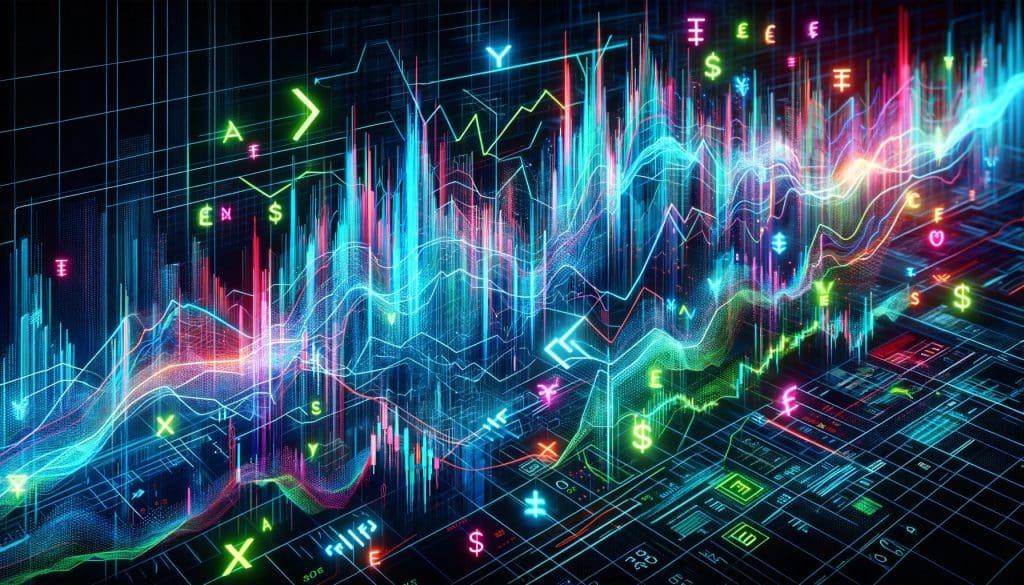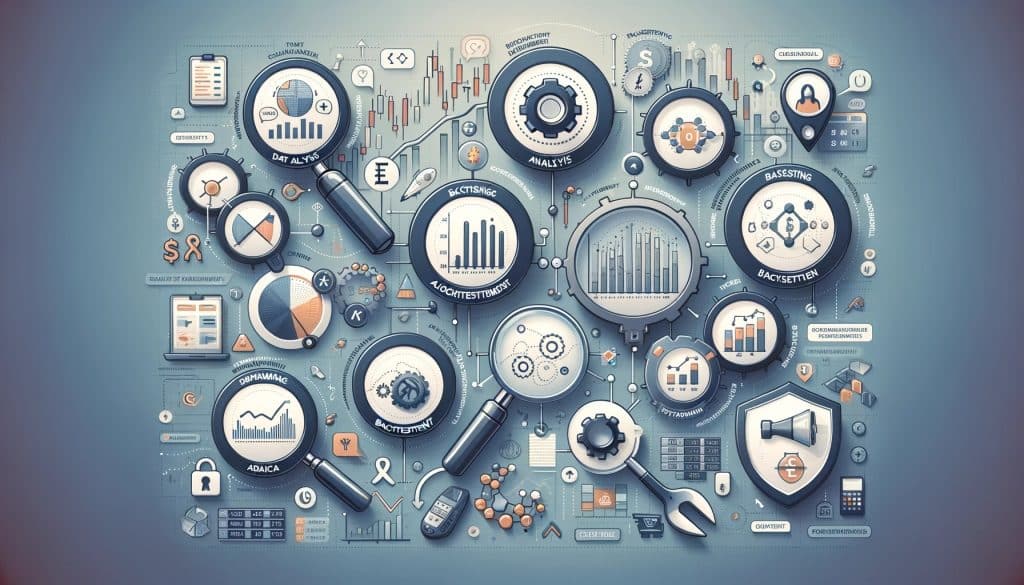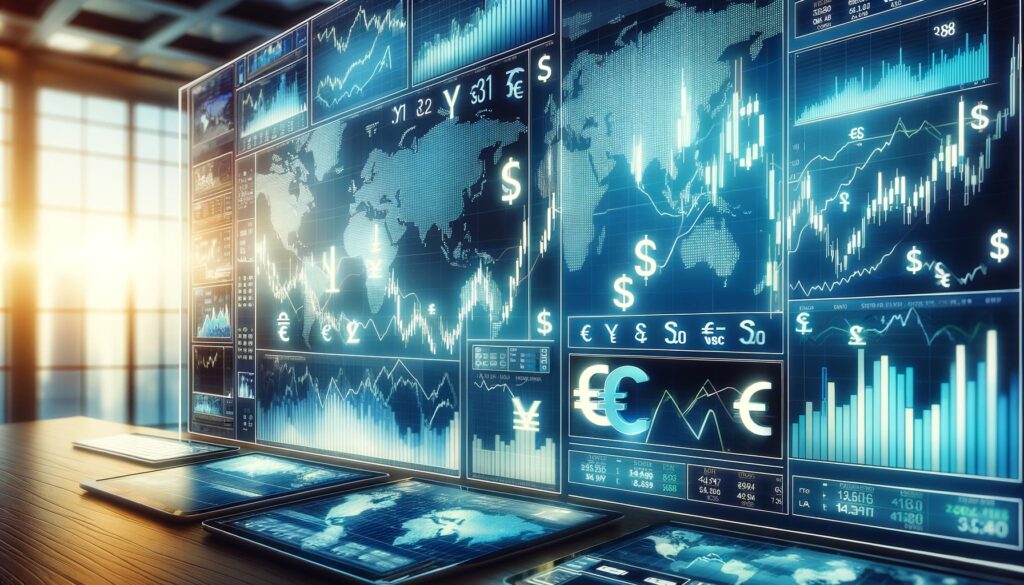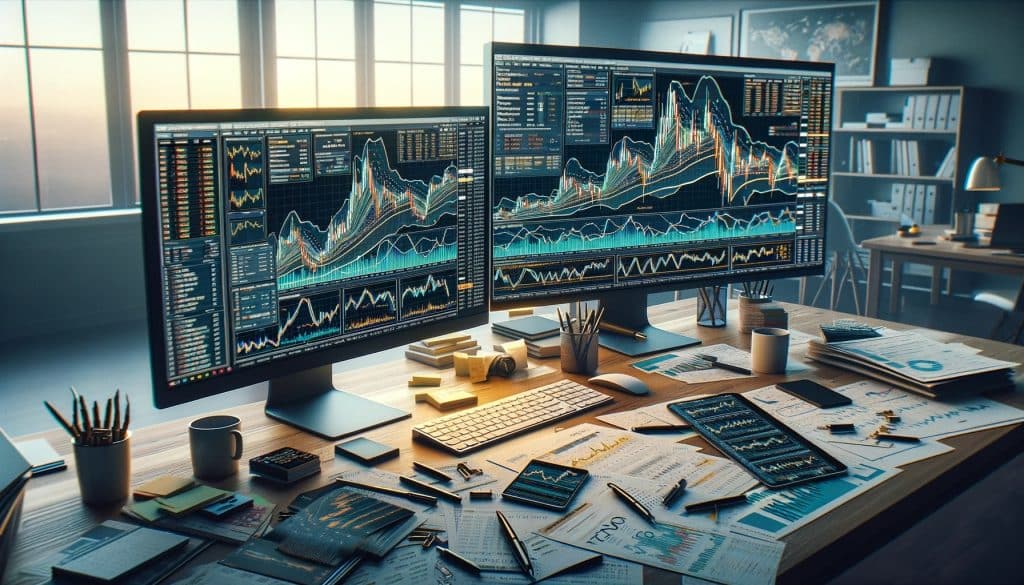Introduction to Algorithmic Trading in Forex
In the fast-paced world of foreign exchange (Forex) trading, algorithmic trading has emerged as a cornerstone of modern strategies. This approach utilizes computer algorithms to execute trades based on predefined criteria, such as price movements or time, with minimal human intervention. The allure of algorithmic trading in Forex lies in its ability to process vast amounts of data at lightning speed, enabling traders to seize opportunities that would be impossible to capture manually.
The Evolution of Forex Trading
Traditionally, Forex trading was dominated by global banks and professional traders who relied on their experience and intuition to make trading decisions. However, the advent of algorithmic trading has democratized the Forex market, allowing retail investors to employ sophisticated strategies that were once the preserve of institutional players. This shift has not only increased market efficiency but also introduced a new level of complexity in trading strategy development.
The Role of Technology in Trading
At its core, algorithmic trading in Forex leverages advanced technology to automate the trading process. This involves using computer programs to analyze market data and execute trades based on algorithms that can include a variety of indicators, such as moving averages, oscillators, and statistical models. The integration of machine learning and artificial intelligence has further enhanced the capabilities of these algorithms, enabling them to learn from market patterns and improve their accuracy over time.

Understanding the Basics of Algorithmic Trading
Defining Algorithmic Trading in Forex
Algorithmic trading, in the context of Forex, refers to the automated execution of trades based on a set of instructions. These instructions are formulated through algorithms that analyze market conditions against historical data to predict potential price movements. The primary objective is to execute trades at optimal times to maximize gains and minimize losses, all while reducing the impact of human emotion on trading decisions.
Key Benefits of Algorithmic Trading
- Speed and Precision: Algorithms can execute trades in fractions of a second, much faster than a human could, and with precision that eliminates the risk of manual errors.
- Market Analysis: Automated systems can monitor and analyze multiple currency pairs across different time zones, offering a comprehensive market overview.
- Reduced Emotional Trading: Algorithms stick to the strategy without being influenced by fear or greed, ensuring consistent trading discipline.
- Strategy Backtesting: Traders can simulate their strategies against historical data to assess viability before risking real money.

Developing Automated Trading Strategies
Crafting a Robust Trading Algorithm
The development of an automated trading strategy begins with the identification of a market opportunity and the creation of a set of rules that the algorithm will follow. For instance, a simple strategy might involve moving average crossovers, where trades are executed when a short-term moving average crosses above or below a long-term moving average. More complex strategies might incorporate a mix of technical indicators, fundamental analysis, and economic indicators to trigger trades.
Example: A Mean Reversion Strategy
Consider a mean reversion strategy, which assumes that prices will revert to their historical average. An algorithm could be programmed to buy a currency pair when its price falls significantly below its 100-day moving average, indicating it may be oversold, and sell when the price rises significantly above the same moving average, indicating overbought conditions.
Building and Backtesting
Building an algorithm requires programming knowledge, with Python and C++ being popular choices due to their extensive libraries and community support. The next step, backtesting, involves running the algorithm against historical data to evaluate its performance. This stage is critical for understanding the strategy’s risk and return profile. It’s important to ensure the data is of high quality and that the backtesting environment accurately reflects market conditions, including transaction costs and slippage.
Forward Testing and Optimization
Following successful backtesting, the strategy undergoes forward testing, or paper trading, in real-time market conditions without committing real capital. This phase helps identify any unforeseen issues with the strategy in a live environment. Continuous optimization is necessary to adjust the parameters of the algorithm in response to changing market conditions, ensuring the strategy remains relevant and profitable.

Challenges and Considerations
Navigating Market Volatility
Algorithmic trading strategies must be designed to adapt to the inherent volatility of the Forex market. This may involve incorporating risk management techniques, such as stop-loss orders or adjusting trade sizes based on volatility measures.
Avoiding Overfitting
A common pitfall in algorithmic trading is overfitting, where a strategy works exceptionally well on historical data but fails in live trading. To avoid this, strategies should be tested on out-of-sample data and subjected to stress testing under various market scenarios.
Technical and Operational Risks
Dependence on technology introduces risks such as system failures, connectivity issues, and software bugs. Traders need to implement robust systems for monitoring and backup to mitigate these risks.

Conclusion: Harnessing the Power of Algorithms in Forex Trading
Algorithmic trading in Forex offers an exciting avenue for traders to enhance their market strategies. By understanding the intricacies of developing and refining automated strategies, traders can leverage technology to navigate the Forex market with greater precision and efficiency. As the landscape of financial markets continues to evolve, the role of algorithmic trading will undoubtedly expand, offering new opportunities and challenges for traders worldwide.
FAQs about Algorithmic Trading in Forex
What is algorithmic trading in Forex?
Algorithmic trading in Forex is the practice of using computer algorithms to automatically execute trading strategies based on predefined criteria. These algorithms analyze market data to make trading decisions, aiming to execute trades at optimal times to maximize profits and minimize losses.
Do I need a background in programming to start algorithmic trading?
While having a background in programming, particularly in languages such as Python or C++, is highly beneficial for algorithmic trading, it’s not strictly necessary. There are platforms and tools available that allow traders to build and test algorithms without writing code from scratch. However, understanding the basics of programming can significantly enhance your ability to develop and refine complex trading strategies.
How important is backtesting in algorithmic trading?
Backtesting is crucial in algorithmic trading as it allows traders to evaluate the effectiveness of a trading strategy by running it against historical data. This process helps identify potential flaws in the strategy and assess its profitability and risk before applying it in live trading conditions. Skipping this step could result in significant losses.
Can algorithmic trading guarantee profits?
No, algorithmic trading cannot guarantee profits. While it can enhance the efficiency and execution of trading strategies, it also carries risks. Market conditions can change rapidly, and algorithms may not always adapt quickly enough. It’s essential to have realistic expectations and incorporate risk management practices to mitigate potential losses.
What are the risks associated with algorithmic trading?
The risks of algorithmic trading include market risk, where changes in market conditions can lead to losses; overfitting, where a strategy performs well on historical data but fails in live markets; and technical risks, such as system failures, connectivity issues, or software bugs. Traders must be aware of these risks and take steps to mitigate them.
How does machine learning integrate with algorithmic trading in Forex?
Machine learning can significantly enhance algorithmic trading strategies by enabling algorithms to learn from market data and improve their decision-making processes over time. It can be used to predict market movements, identify trading opportunities, and optimize trading strategies based on evolving market conditions. However, implementing machine learning requires advanced knowledge in data science and programming.
What’s the difference between manual trading and algorithmic trading?
Manual trading involves a trader making buy or sell decisions based on their analysis and executing trades manually. In contrast, algorithmic trading uses computer algorithms to automatically execute trades based on predefined criteria without human intervention. Algorithmic trading is faster and can process more data than human traders, but it lacks the intuition and flexibility that a skilled manual trader might possess.
Can algorithmic trading be used by retail traders?
Yes, algorithmic trading is not just for institutional traders but is also accessible to retail traders. Advances in technology and the availability of trading platforms have made it easier for retail traders to develop, test, and implement algorithmic trading strategies. However, retail traders should be mindful of the learning curve and the risks involved.
How do I choose the right algorithmic trading software?
Choosing the right algorithmic trading software depends on your trading needs, programming skills, and budget. Look for software that supports backtesting, forward testing, and live trading with robust data analytics tools. It should also be compatible with the financial markets you intend to trade in. Starting with a platform that offers a demo or trial period can help you assess its suitability without committing financially.
Is it necessary to monitor my algorithm constantly?
While algorithms can automate trading decisions, it’s prudent to monitor them regularly to ensure they are functioning as intended and to make adjustments in response to changing market conditions. Technical issues, unexpected market events, or shifts in market volatility can all impact the performance of your algorithm, making regular oversight essential for successful algorithmic trading.





